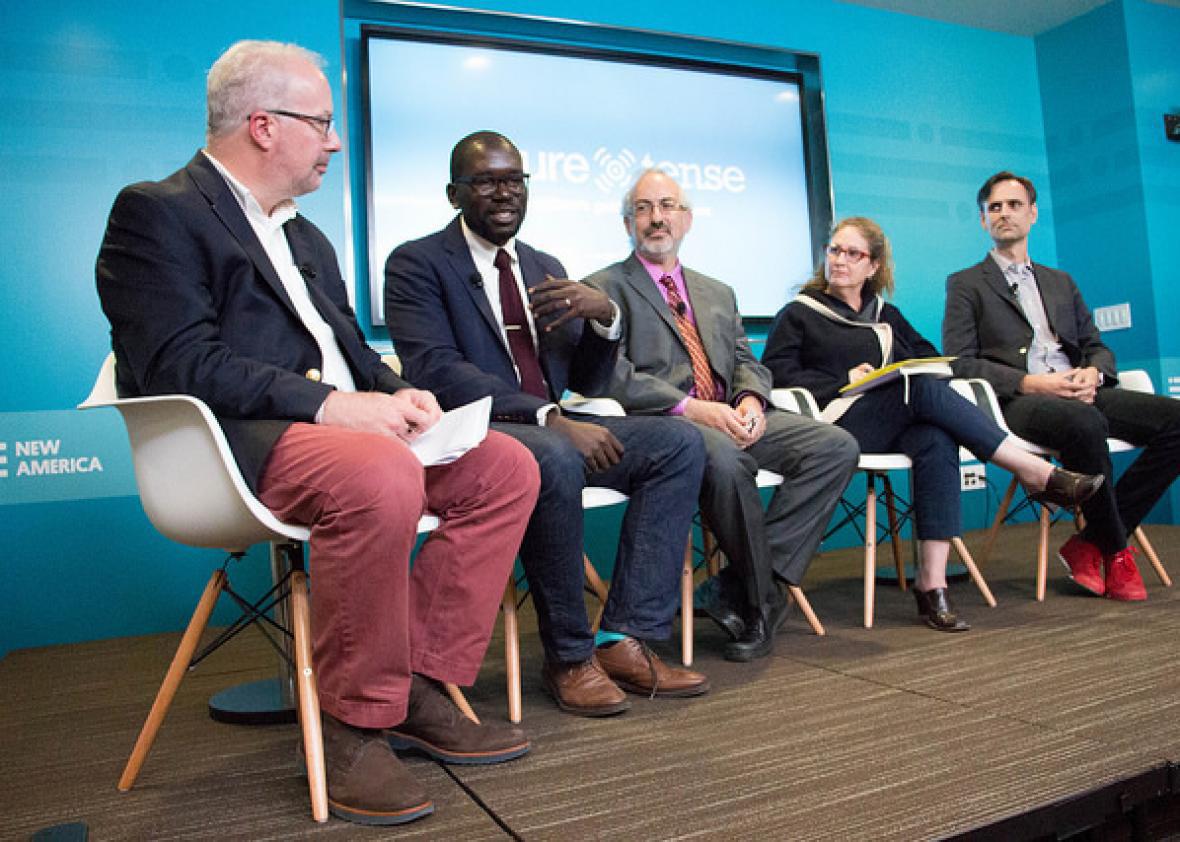It’s a common refrain: We do our banking online, self-driving cars are hitting the road, and even fridges and coffee machines connect to the internet. Yet voting seems stuck in the past.
On Oct. 5, Future Tense—a partnership of Slate, New America, and Arizona State University—held an event in Washington, D.C., to ask the question: “Isn’t It Time We Designed an Election for the 21st Century?” The happy hour conversation examined the problems with our current voting process, and paid particular attention to barriers to participation for many eligible voters, and how technology might help fix them. Of course, as is so often the case in technology, to perform a major upgrade might be to download a whole new mess.
The event opened with a presentation from Matt Adams, program director at the design firm Ideo, who led a project with Los Angeles County to create “the first publicly owned voting system.” The initiative had two primary goals: “to remove the barriers that kept some voters from feeling like they could vote,” and “to create a system that worked really well now” as well as in the future, should regulations and technology change. At heart, “Every machine should serve every voter,” regardless of challenges related to mobility, literacy, vision, or other issues. Technology can help there by offering more accessibility settings, for instance. In the conversation that followed Adams’s presentation, Jamelle Bouie, Slate’s chief political correspondent, reinforced this message, saying that what we need is “an election system that meets voters where they are.”
For example: wherever they are waiting in line, most voters are probably staring at their phones. Adams said that people often express a wish to vote on their smartphones, but “we haven’t figured out yet how to vote anonymously and securely over the internet.” That point is borne by the recent revelations that hackers, likely from Russia, have attempted to infiltrate voter registration systems. Jeremy Epstein, senior computer scientist at SRI International, expressed frustration with the “I can bank online, why can’t I vote online?” refrain. He doubts “that cities and counties with very limited budgets are going to be able to successfully do online voting.” Banks “spend billions of dollars securing their systems; election offices don’t,” he said. And a margin of fraud that might be acceptable to banks would not be to voters. (Those smart fridges connected to the internet? A photo circulating online purports to show one at a Home Depot that was hacked to display Pornhub.) Furthermore, he said, new voting technology needs to take into account the fact that the average poll worker is over 70, which could complicate Election Day troubleshooting. If malfunctioning technology ends up creating longer lines to vote, some people might decide not to bother casting a ballot.
Slate’s Dahlia Lithwick pointed out, though, that the problem with voting goes well beyond infrastructure that is at once antiquated and not ready for primetime. “Even if I could vote by blinking twice,” she said, many people still fundamentally believe that their votes don’t matter. And the fix for that won’t come from technology.
Watch the full event on the New America website. Also in Slate:
- “Changing Votes Isn’t the Only Way Hackers Could Undermine an Election,” by Rep. Zoe Lofgren
- “What Hacks Into Voter Registration Systems Say About the State of Local Government Cybersecurity,” by Brian Nussbaum
- “Bring On the Ballot Selfies,” by Mark Joseph Stern
